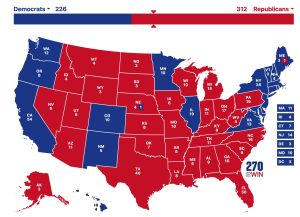Commemoration through memorialization
As the Reynolda House’s work began to shed light on the history of Five Row, Wake Forest University began a new chapter in its attempts to grapple with its legacy of slavery.
Joining over a hundred other universities, Wake Forest has had an active membership in the Universities Studying Slavery consortium since 2017. The collective created by the University of Virginia strives to reckon with the role slavery played in the founding of many institutions. Part of their initiative involved compiling known histories in conjunction with dialogue around the systemic issues.
“To Stand With and For Humanity” is a series of essays from the WFU Slavery, Race and Memory Project that were edited by Corey D.B. Walker, Dean of Wake Forest University School of Divinity, and compiled into a book. The book details the University’s longstanding history of unjust treatment of African Americans.
Earlier this year, the Old Gold & Black reported that Wake Forest did not purchase or own enslaved people, “due to the institution’s financial instability in the period from its founding to the Civil War.” However, Wake Forest paid several slaveowners, some of whom were Wake Forest faculty and administrators, to contract enslaved laborers for construction, agriculture and domestic work. Other slaveowners’ wills left enslaved people to Wake Forest. The essay edited by Walker states “the college also benefited from the bequest of 16 enslaved people sold to fund the first major endowment.”
Known names of enslaved individuals exploited by the university include: Ellick, Harry and wife, Charlotte, Johnson, Anderson, James, Lender, Mary, Sarah, Phillis, Mary, Lucey, Venus, Patience, Mary, George, Murphy, Ted and wife Amy Jones’ two children, Rose, Martha, Lexy, Mary Sherwood, Aggy and children, Maranda, Mary Harris, David, Anderson, Virtn, Betty, Inez, Harvey, Tom, Venus and child, Mary, Emma, Lettice, Isaac, Jim, Lucy, Caroline, Pompie, Nancy, Harriet and child, Joseph, Harry, Ann and two children and Thomas.
“Our involvement in the institution of slavery is harsh evidence that our realities fell far short of our aspiration,” Former President of the university Nathan O. Hatch wrote in his essay, “An Apology.” “We acquiesced to the times and lacked the moral imagination to envision better for all. Like those who went before us, we can be blinded by our own privilege.”
In April 2023, President Susan Wente announced the launch of a new effort to “honor the humanity of the enslaved men, women and children who worked for or were sold to benefit the University,” according to a message from Provost and Presidential Endowed Chair of Southern History Michele Gillespie and Vice President and Chief Diversity Officer José Villalba. The Campus Memorialization Steering Committee has guided this effort after the Wake Forest University Board of Trustees voted unanimously in favor of the memorialization.
The multi-phase project began in earnest in April 2023 and is currently in its third phase. The first phase consisted of site visits with Baskervill, an architectural firm contracted for the project. The second phase started between late fall 2023 and summer 2024 with Baskervill convening 18 focus groups and meeting with over 100 students, staff, faculty and alumni. Members of the Association for Wake Forest University Black Alumni were consulted. This phase extended into the spring and early summer of 2024 with Baskervill analyzing the data generated from these focus groups. In June 2024, their findings were collected and transcribed into a report that can be found on the memorialization’s website.
Now in its third phase, five conceptual themes for the memorial’s design and possible zones for its location have been shared with the community.
“Wake’s history is layered and complex, full of manifestations of our motto. It also includes failures to live up to our ideals and values. In many ways our institutional ties to slavery in the antebellum South is one of our first failures to stand with and for humanity,” Villalba says. “Interrogating this history, and specifically acknowledging all of our founders — the willing and unwilling — is a crucial step towards self-reflection and awareness.”
It’s uncertain when the memorialization will be completed as the design and location are still being selected, but the response from the community has been positive, according to Villalba.
“The community has understood the gravity of this process, and has been appreciative and supportive of taking our time,” Villalba says. “It speaks to the community’s genuine interest in honoring and remembering enslaved individuals who founded our institution.”
It’s impossible to move forward as a community or institution without coming to terms and owning the complicated past and wrongdoing towards members of the Black community. Honoring their experience and being transparent when telling the history of Reynolda and Wake Forest University is not only important — but necessary.
“You may write me down in history
With your bitter, twisted lies,
You may trod me in the very dirt
But still, like dust, I’ll rise.”
– Maya Angelou, from “And Still I Rise” (1978)











